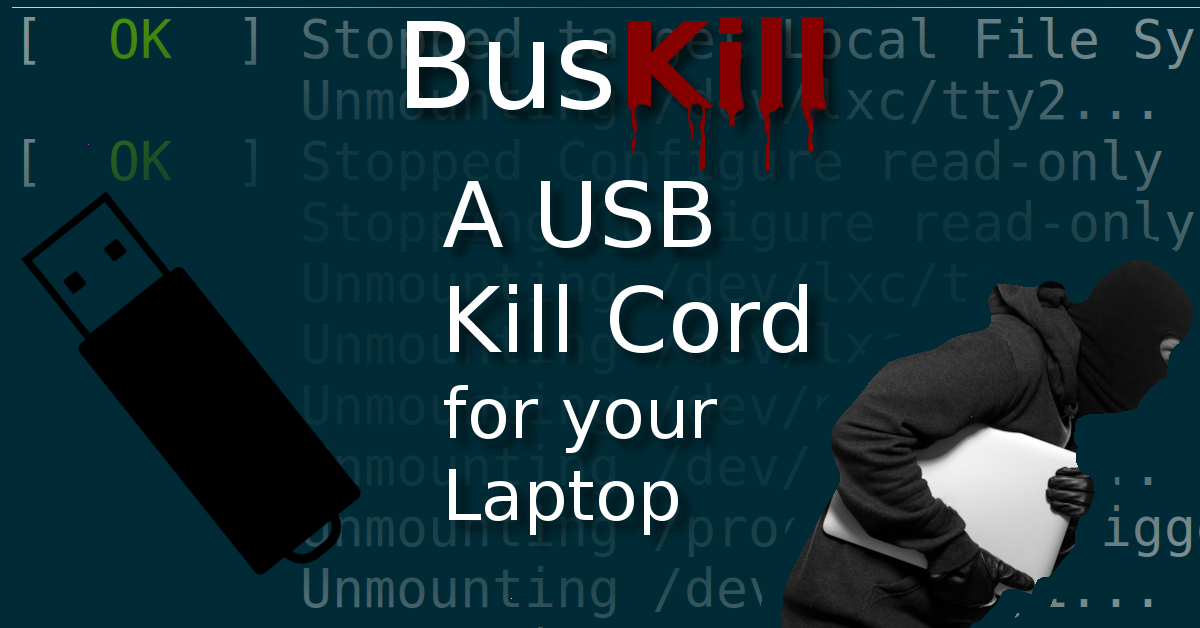JamesTaiclet
Outlander
- Messages
- 19
- Specialization
- Engineering Sector
Hello all,
Recently I was browsing the internet in Internet Explorer and found this interesting piece of fringe technology on my RSS feed!

 github.com
github.com
Its an interesting concept. A USB drive that is attached to you and the computer, with a magnetic break-away in the center. When you get up, the USB drive is disconnected, thus rendering the computer inoperable. To bad they want 50-100 dollars for each USB kill cable when similar cables are available on aliexpress for next to nothing. Also having the cable would hurt plausible deniability; your silence cannot be used against you in court but having a bus kill branded cable could be introduced as attempts to hide evidence.
A much cheaper and more plausibly deniable system could be made using a cheap magnetic break away cable, a usb-c female to usb-a female adapter, a low profile usb drive that has a lanyard attachment point, and a good means of attaching it to yourself. This setup comes out to a whopping 25.91 USD, and you might even have some of these items at hand already. Fill with necessary documents that you might actually use on a regular basis and you have a very plausibly deniable system.
I have tried the software on my computer (Ubuntu, the only acceptable linux operating system for a homosexual man of my stature) and it seemed to work acceptably. Despite their rather questionable decision to use Python for this application, nothing seems to be unstable. I am going to mess around with the triggers and CLI mode at some point and see what interesting behaviors could be set up. If it actually performs well I could see myself adding it to my list of things to use when traveling for business.
Yours,
James "Jerkin" Taiclet
Recently I was browsing the internet in Internet Explorer and found this interesting piece of fringe technology on my RSS feed!
GitHub - BusKill/buskill-app: BusKill's main CLI/GUI app for arming/disarming/configuring the BusKill laptop kill cord
BusKill's main CLI/GUI app for arming/disarming/configuring the BusKill laptop kill cord - BusKill/buskill-app
Its an interesting concept. A USB drive that is attached to you and the computer, with a magnetic break-away in the center. When you get up, the USB drive is disconnected, thus rendering the computer inoperable. To bad they want 50-100 dollars for each USB kill cable when similar cables are available on aliexpress for next to nothing. Also having the cable would hurt plausible deniability; your silence cannot be used against you in court but having a bus kill branded cable could be introduced as attempts to hide evidence.
A much cheaper and more plausibly deniable system could be made using a cheap magnetic break away cable, a usb-c female to usb-a female adapter, a low profile usb drive that has a lanyard attachment point, and a good means of attaching it to yourself. This setup comes out to a whopping 25.91 USD, and you might even have some of these items at hand already. Fill with necessary documents that you might actually use on a regular basis and you have a very plausibly deniable system.
I have tried the software on my computer (Ubuntu, the only acceptable linux operating system for a homosexual man of my stature) and it seemed to work acceptably. Despite their rather questionable decision to use Python for this application, nothing seems to be unstable. I am going to mess around with the triggers and CLI mode at some point and see what interesting behaviors could be set up. If it actually performs well I could see myself adding it to my list of things to use when traveling for business.
Yours,
James "Jerkin" Taiclet

